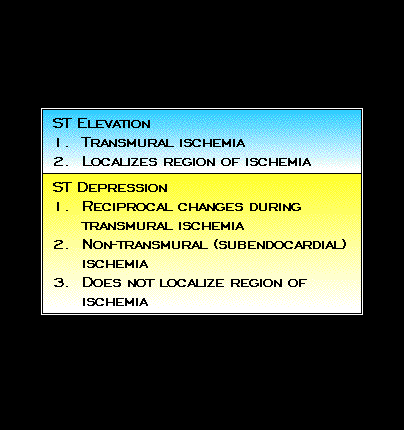
to continue… Ischemia induced ST segment elevation on the body surface ECG indicates that the ischemia is transmural. The ST elevation occurs in the lead or leads overlying the ischemic region and is thereby able to determine the location of the ischemic zone and, inferentially, to predict the occluded coronary artery. Ischemia induced ST segment depression is either the reciprocal of ST segment elevation, as in the case of posterior wall involvement, or is caused by non-transmural ischemia. In this situation, the ST segment depression does not localize the region of ischemia even though the ionic and electrical events occurring within the ischemic zone are the same as those associated with transmural ischemia.
